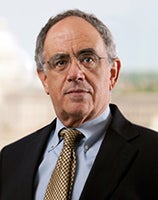Dayton promises 600 projects? Not so fast
Published 9:45 am Monday, March 16, 2015
By Bill Blazar
Gov. Mark Dayton dangled money in front of Mankato transportation advocates to kick off his statewide tour promoting his package. The Mankato Free Press, unfortunately, swallowed the bait – hook, line and sinker in an editorial reprinted March 5 in the Albert Lea Tribune. Let’s pause a moment before jumping on the governor’s bandwagon.
The governor and Transportation Commissioner Charlie Zelle may have shared the same message at the podium in Mankato — promising that passage of a $10.7 billion funding program will translate into a green light for 600 specific projects across the state, including Highway 14.
The message was far different — a “yellow” light at best — from Department of Transportation headquarters in St. Paul. When some of the metro counties expressed heartburn about the lack of representation for their priority projects on “the list,” we learn from a MnDOT spokesman that the 600 projects on Dayton’s list are merely “examples of the kind of work that we would do with the new transportation funding.” We were told that “if new funding is approved, there will be a planning process at MnDOT to program improvements. During that time, there will be ample opportunity for cities and counties to make the case for projects that aren’t on the list.”
So, apparently, once again, “the list” really isn’t “the list.” And the reported outcomes associated with this level of new investment really aren’t the outcomes associated with this new level of investment.
The Minnesota Chamber of Commerce understands the need to invest in a safe, reliable, efficient and multimodal transportation system. Without it, our members cannot get their goods to market, their employees to work or customers to their doors. We support sustained and strategic investment in the state’s transportation infrastructure. The Legislature should pass a 10-year plan funded by efficient use of current resources, general fund appropriations and value capture mechanisms.
However, before bringing this conversation to the point of how to raise new revenues, we must first agree on the nature and necessary level of investment. Some have argued that we have those answers, but data and planning estimates vary widely.
For the record, the business community has invested a great deal of time and money in transportation infrastructure.
In 2006, the Minnesota Chamber led a broad-based coalition that raised $4 million to pass a constitutional amendment. Today 100 percent of the receipts from the motor vehicle sales tax are dedicated to transportation — 40 percent to transit, 60 percent to roads and bridges for an additional $300 million per year, effective in 2012.
In 2008, we led the effort to pass major legislation, including an override of Gov. Tim Pawlenty’s veto, to help fund roads and transit in a 10-year, $6.6-billion plan. The gas tax was raised by 8.5 cents, phased in over several years with the last increase in July 2012.
We welcome the robust debate on transportation. But promoting projects with hollow promises is no more than political hyperbole.
First, let’s have a meaningful conversation to reach consensus about what we need to invest. Second, let’s get practical — and creative — about how to fund it. Our goal is a transportation system that facilitates a changing and growing economy. We need an investment and funding strategy that’s up to this task.
Bill Blazar is interim president of the Minnesota Chamber of Commerce.


